SOMETIMES I TURN UP AT AN EVENT having done my homework, and then sometimes I figure I know the subject matter well enough and I’ll just be open to the moment and what I discover along the way. That’s how I turned up for a Chef’s Collaborative educational event and fundraiser called Meat Matters on Tuesday, to which I had been invited as a media guest—I knew the people well enough.
It was the dead animal on the table that stumped me.
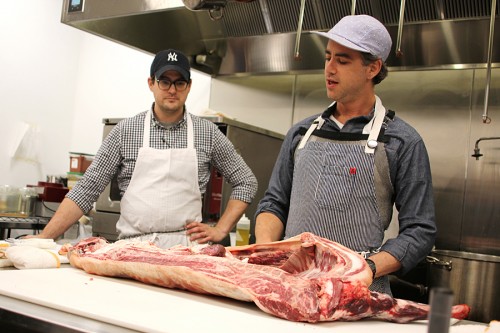
Rob Levitt of The Butcher & Larder, and Adam Danforth
To be precise, it was a side, or half of an animal, head and feet removed, cleaned up and waiting for a butchering demo in a back room at The Butcher & Larder within Local Foods. Sizewise, it could have been a calf, but the meat seemed too red, almost purplish. There are pigs that color, and the chest area looked like a nice pork belly, but besides seeming a bit high up for belly, the rest of the animal was awfully lean. It had to be a sheep, I finally guessed, but it was striking how few clues there really were (beyond simply size) by the time an animal had been reduced to a carcass ready for carving into kitchen cuts.
Two men in aprons stood next to the table—Rick Bayless and Rob Levitt of The Butcher & Larder, and then a third I didn’t know with a plastic holster full of knives, who stood in the center. As about 25 of us crammed into the tiny room to watch the butchering demo, he was introduced as Adam Danforth, a Portland-based butcher and author of two 2014 books, Butchering Poultry, Lamb, Rabbit, Goat and Pork, which won a James Beard Foundation award, and Butchering Beef (which evidently merited a book of its own). So that answered the who, but it would be a few more minutes before the what was answered and I finally knew that it was a goat we were looking at.
Danforth’s mission was to educate us on looking at our meat in a different way—eating whole animals, being willing to eat older animals or less desirable animals such as dairy cattle (which tend to get turned into low-grade hamburger at the end of their productive lives), getting more out of different parts of the animal than just reducing everything to a catchall dish—hamburger for beef, birria for goats. This is a message that I suspect everyone who came to the night’s event had already heard more than a few times, but seeing it in terms of butchering a goat gave us a new perspective.

Danforth preaches, Rick Bayless takes notes
So who was “us,” exactly? Who would spend a Tuesday night in the back of a butcher shop? Some were chefs, and some were food fans who’ve maybe read Ruhlman’s and Polcyn’s Charcuterie or other meatcentric cookbooks. But there was also a family of farmers from Indiana who had raised goats in the past, and industry figures like the influential Chicago-based butcher Kari Underly, celebrated as a beef butcher but as she admitted, not so expert on the butchering of goats.
The first point Danforth wanted us to understand was that Americans were very different in their approach to meat than almost anywhere in the world—first, because goat was such a tiny part of our diet (as in zero for most Americans), and second, because we associate meat quality with the soft parts, the tenderloins, which he finds the least interesting thing to eat. As he put it, “There’s an inverse relationship between tenderness and flavor.” He was blunter yet when someone asked what the most surprising misconception Americans have about beef is:
“That it tastes good?”
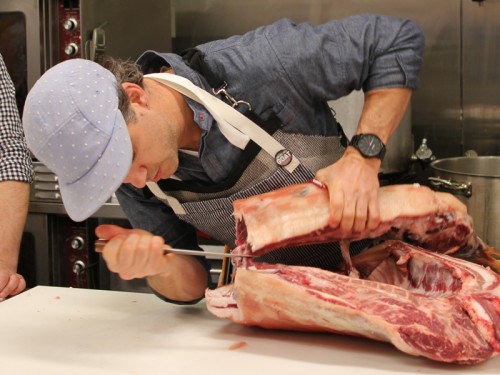
The second thing was that—no offense to birria, Chef Bayless, or any other goat stew enjoyed anywhere in the world—but a goat has many distinct parts. In fact, almost exactly the same distinct cuts as the other mammals we eat, and it’s a shame to routinely reduce them to commodity meat for the pot. And so, for the next hour, he cut out things we knew from other animals, especially cattle. Here was the brisket, here was the tri-tip, here was the flank steak. He even told us where to find bavette steaks and Denver roasts on a goat. The only difference was, they were like dollhouse versions of what we knew from the beef section of the meat counter. A tri-tip was a triangle of meat about three to four inches on a side. The tenderloin was about the size and shape of a big chicken tender.
One thing this demonstrated, incidentally, is how little meat there really is given the size of the animal—perhaps 10% of the total weight. Which makes it all the more shameful—not to mention bad economics—that we use so little of it as a premium, named cut and turn most of into a commodity. That we carve off steaks and dispose of the rest. That discussion led to the final part of the demo—Rob Levitt frying off the distinct cuts and placing samples, labeled, on a tray for us to try.

Which brought us back to the specific animal in front of us. Not just a goat, but this goat, which Danforth said was about eight years old when slaughtered five days ago. He had not tried the meat, and there was an open question whether an eight-year-old ram would be tasty or too gamy. Indeed, the farmers from Indiana asked that very question, and Danforth talked about how you needed to treat the animal well during slaughter, and by extension during the entire life leading up to slaughter, in order to have good tasting meat. And to sleep at night, I hope, though as Danforth observed a bit sardonically at one point, he’s not a farmer—”I’m not so good at animals that are still alive.”
In any case, far from being tough ram meat, the delicate rare meat, red as wine, was remarkably tender and so far from having a gamy taste that I could easily have mistaken it for beef. I asked Danforth if he would have typed it as goat from the small bites we had and he said maybe from the visual appearance, the color was awfully dark for pink American beef, but not really from taste. Then he asked us if we had particular cuts that we had tasted and liked. Different people named different cuts—the flap, or the flank.

In an hour and a half, converts had been made—goats have cuts, and they’re worth knowing about. As Bayless pointed out, the mere fact that we had all been willing to try the meat, and to judge the cuts we liked more or less, was a huge advance over the state of things when he began Frontera 30 years ago, and he’d make authentic goat dishes, and nobody, but nobody, would even try them.
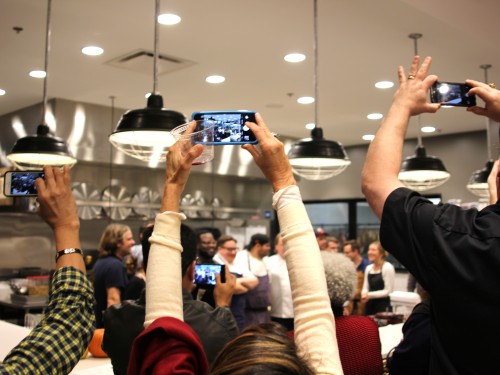
THE REMAINDER OF THE EVENING was a party held on the shopping floor and in the Stock cafe at Local Foods, the farm-to-table distributor and, now, grocer to the public. A dozen Chicago chefs known for their farm to table inclinations served up dishes made with the non-premium cuts of different animals. Nathan Sears of the Radler served slow-roasted pork shoulder with wintry seasonings like chestnut and candied orange. Bayless and Topolobampo executive chef Andres Padilla served goat barbacoa and something like goat porchetta on a polenta cake with chocolate mole. Scott Manley of Table, Donkey & Stick made lamb and pork caillettes, an offal-y sausage in caul fat. Jason Hammel and Sarah Rinkavage of Lula Cafe piled rare beef heart on a flatbread. Abra Berens of Stock ladled shredded goat neck in a spicy sauce over sweet potato fritters. And so on.
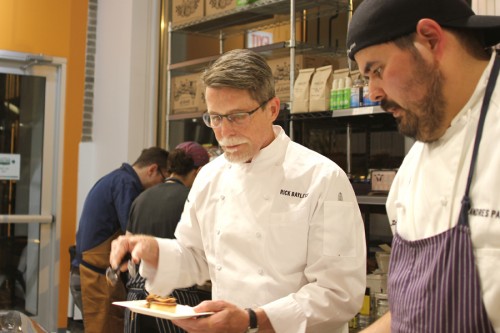
It was an impressive demonstration of all the things you could make with all the parts you could get your hands on. But I have to admit I was still wondering, the next day, how they even found 25 people in Chicago who really needed to know how to cut up a goat into tri-tips and flaps. (And who weren’t already doing it at a Mexican or halal butcher somewhere in town.) So the next day I stopped by Big Jones to talk to one of the organizers of the event, chef Paul Fehribach, who’s on the board of Chef’s Collaborative.
You might say I was finally doing the homework I should have done before the event. I prefer to think of it all as being like my own episode of CSI—we started by examining the body, and now we were looking for the motive. Chef’s Collaborative, which works to help chefs connect with farmers to improve our food culture and make both the food and the farmers more sustainable, clearly had a purpose in mind for the evening (besides fundraising and eating). So what was it?
“Chef’s Collaborative was started—I remember when it started, though I was still in Bloomington [Indiana] at the time,” Fehribach explained. “I think Michel Nischan was involved, Mary Sue Milliken, the Barkers of Raleigh Durham, and Rick Bayless. They all went and did a retreat in Hawaii in about ’93—I have no idea how they all got together. But they agreed that the current status quo of food in America was not sustainable, it wasn’t acceptable, it was having too much of an impact on the environment.”
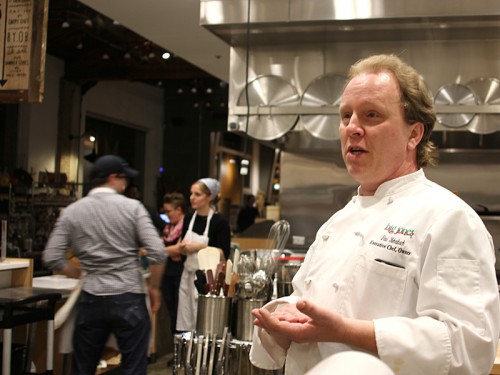
Paul Fehribach
“And so they started this network that has been very loose over the years, but especially in the last six or seven years has coalesced over a core set of principles. Which is to promote small scale local agriculture, small scale local fishing, definitely focusing on the low impact aspects of food production. We do trash fish dinners—that’s been controversial. A lot of fishermen get really angry when you use that word. It’s sort of deliberately provocative. I don’t like that word either—I mean, people call bluefish and amberjack trash fish and they’re some of my favorite fish.”
Meat Matters, the title given to this program, is a new initiative in the same vein. Fehribach explained that it’s intended “to raise issues about livestock production, and also to challenge some of the preconceptions we have. It’s really interesting when you think about where the food world was in 1993. They sort of had to find their way in a landscape that was completely different. When you think about what they were advocating then, which was even something as simple as just finding a local farm to get strawberries from—[now] you see companies like Driscoll gradually reducing their conventional acreage and rapidly increasing their organic acreage. Or you have companies like Perdue, which just bought Niman Ranch, because they see that as their vehicle for growth.”
“Things have changed dramatically. So we’re here to be a resource for young chefs who are just starting out, and particularly to chefs who want to change directions. We do a symposium every year, it’s in New York this year. There are a lot of breakout sessions—we always have a lot of corporate and institutional chefs, and they have a really challenge figuring out how to do this on their scale. Last year in Boulder Dan Rosenthal, who has a big restaurant group here in Chicago, did this presentation, it was only five minutes long like a TED talk, that was basically, you serve 8000 pounds of meat a week and you want to go antibiotic-free, here’s how to do it by the numbers.”
Think about where things were 20 years ago, when you couldn’t even find a place to buy local strawberries.
I said to Fehribach, that’s great for the industry, it undoubtedly helps chefs and farmers. But take an event like the previous night’s—how many people really needed to know how to butcher a goat?
“Well, not that many,” he admitted. “But there’s really a couple of purposes for an event like we did last night. A big one is just networking. We want to be a little more active in our communities, on the local level to let people know that these things exist nationally. The chefs are mostly plugged in already, at least the ones who already work like this.”
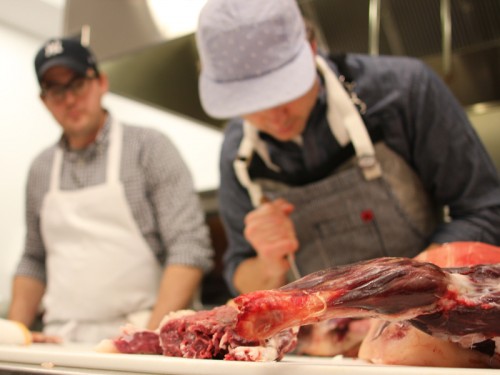
“It’s also to get people working with a company like Local Foods—and that was Rick’s idea, to go to Local Foods and get them into this networking effort as well. It raised a little bit of money for Chef’s Collaborative, not a substantial amount, but there is also that educational component. We look at it as sort of being on the leading edge—not many people really need to know how to butcher a goat, and maybe even fewer would be interested in tasting an older goat, but to get people like yourself who would be interested in those, and maybe start the discussion.”
“I mean, I had no idea until Adam was talking last night that there are farmers who raise really good beef from their dairy herds—and that’s really kind of a powerful message. Again, when you think about where things were 20 years ago when you couldn’t even find a place to buy strawberries, and where we are now, we do things like this and maybe 20 years from now, the dairy industry is much better and the dairy industry is treating their animals better, because we’re going to focus on using them for meat in a way that’s not just sort of a garbage fast food product.”
“A lot of the time when you do these things, you don’t really know where it’s going to trickle down to. But the point is to ask the questions. And Adam’s a really good person to challenge those presumptions.”
Michael Gebert recommends the goat chanp at Khan BBQ, and is the editor of Fooditor.
Latest
Join the Discussion
After you comment, click Post. If you're not already logged in you will be asked to log in or register with Disqus.




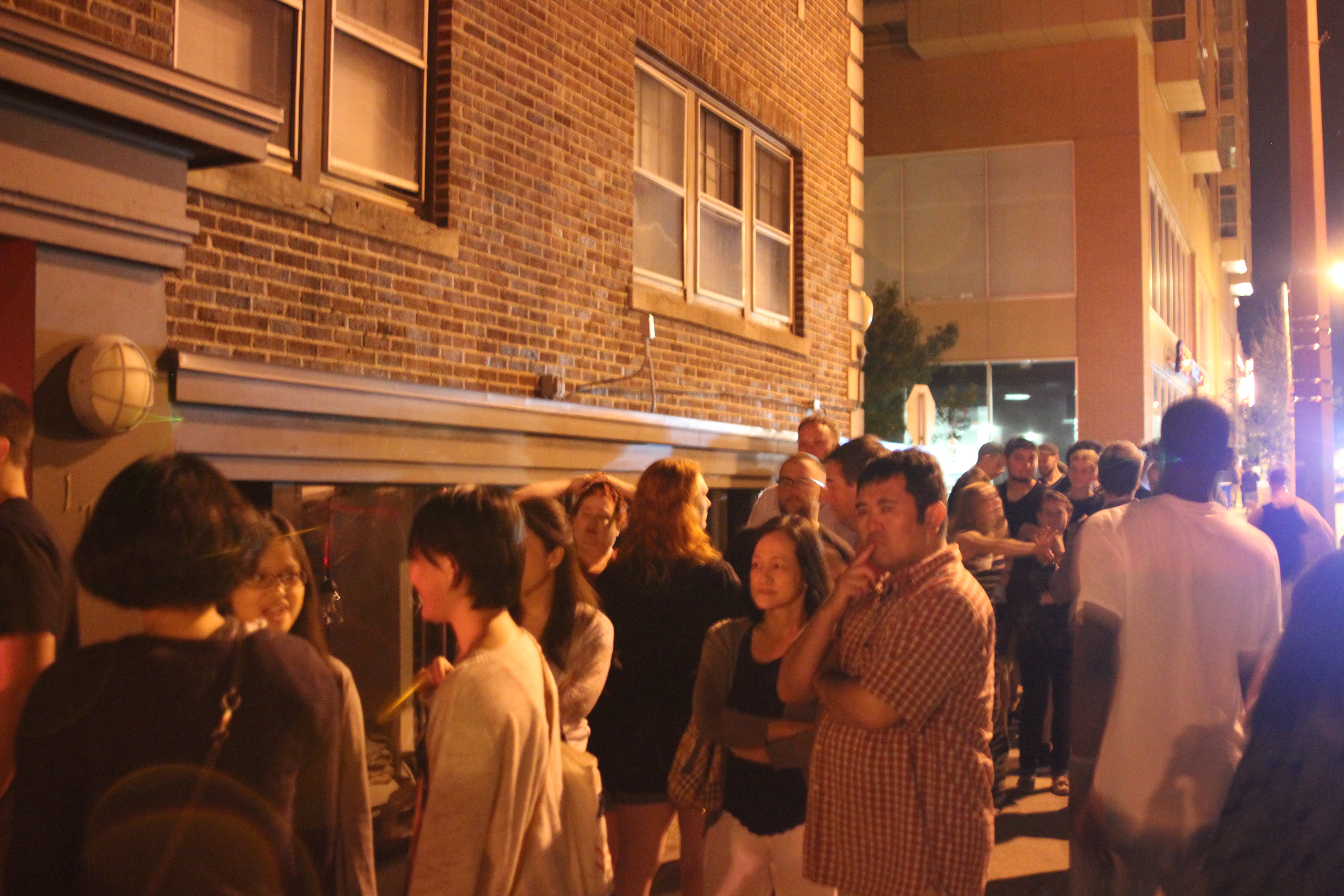
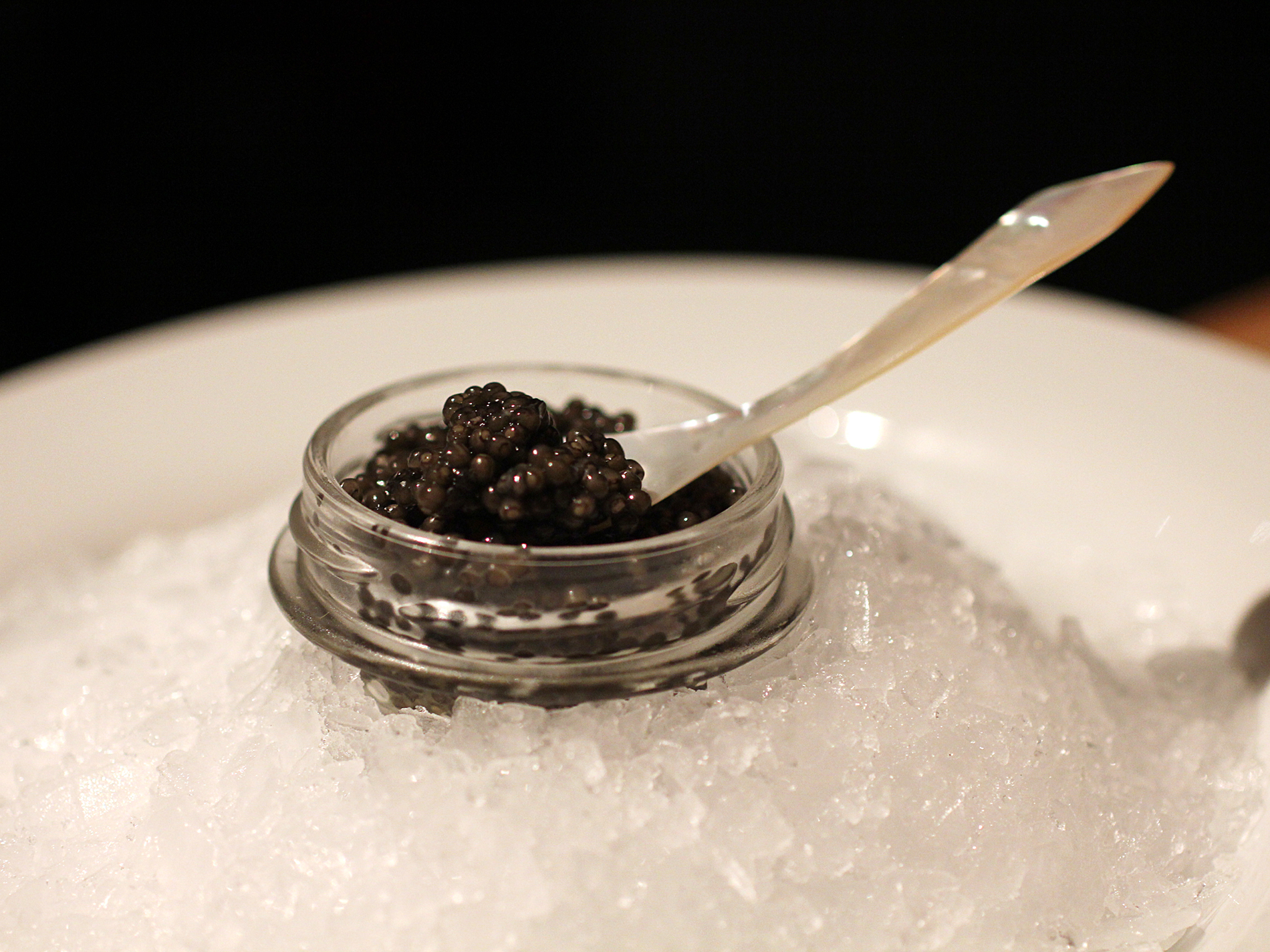
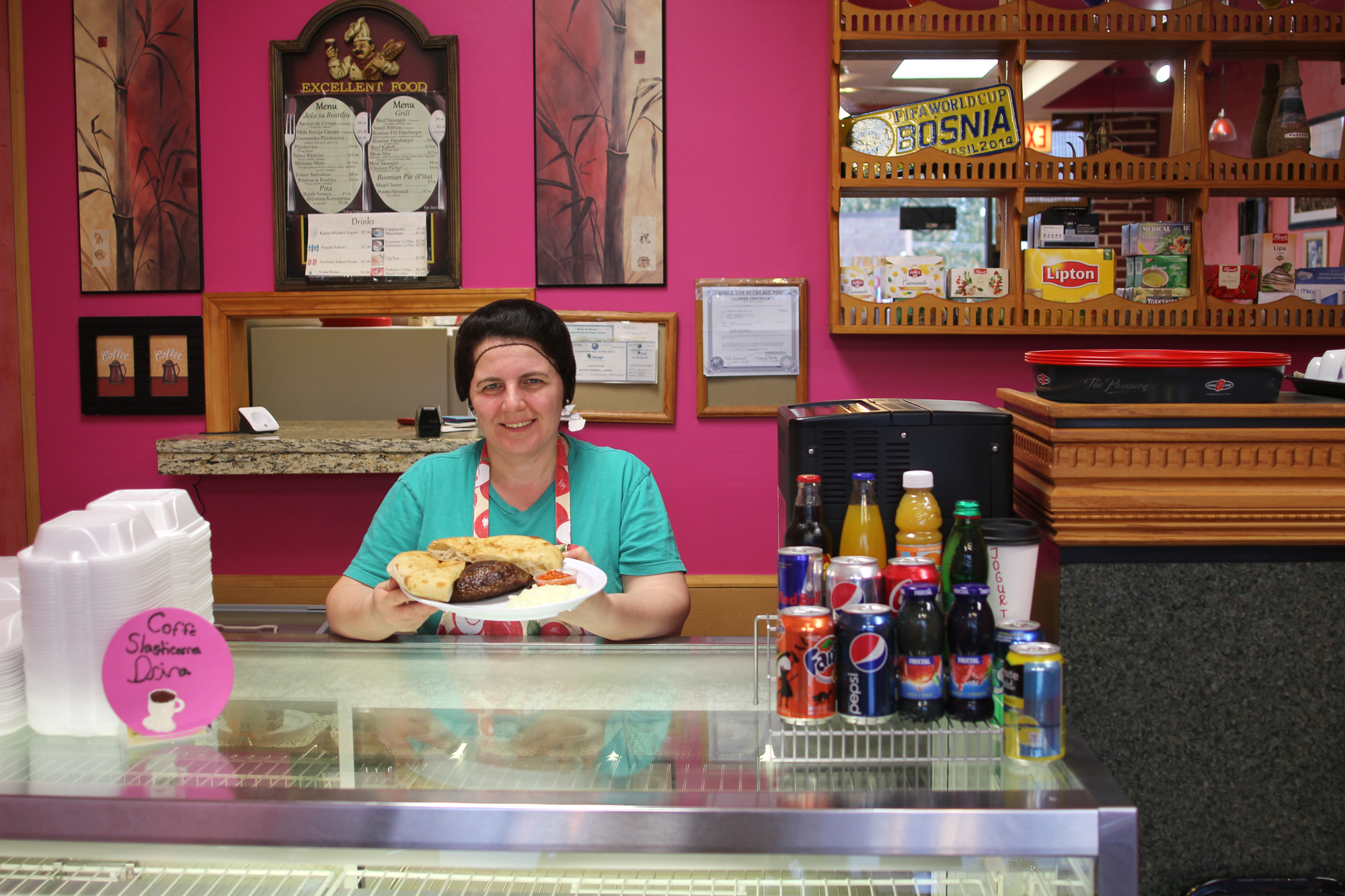
[…] Meat matters. […]